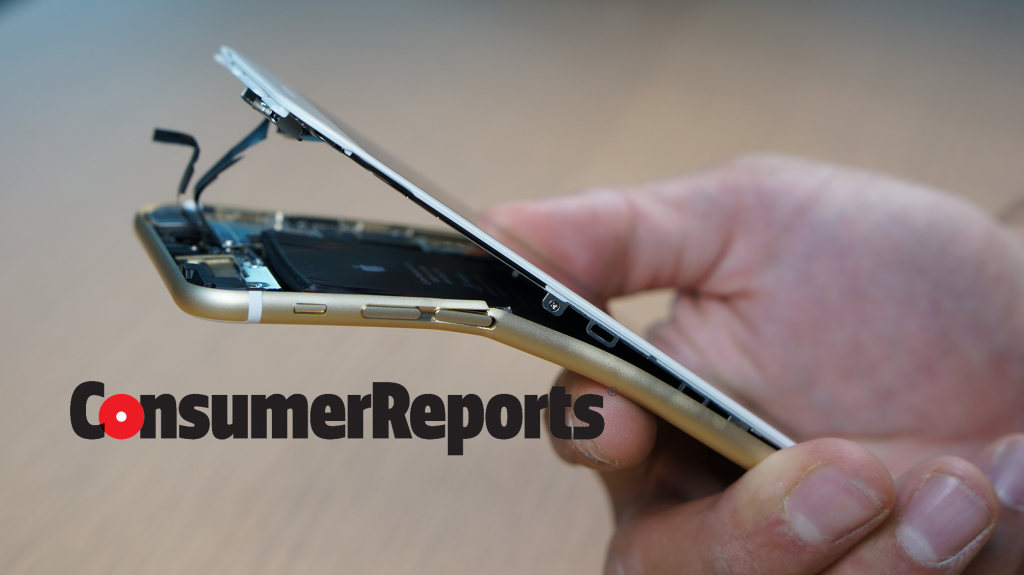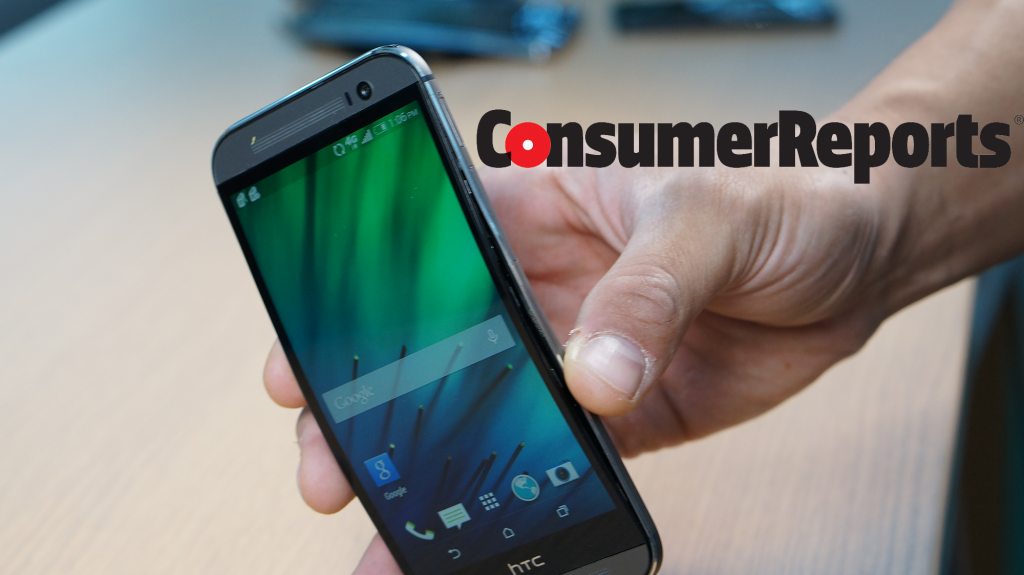Consumer Reports Test Shows It Takes A Lot To Bend New iPhones Image courtesy of Consumer Reports
While there have been anecdotal claims of the new iPhone 6 Plus bending just from spending too much time in a user’s pocket and multiple videos of people showing that you can bend one of these phones with your bare hands, there hasn’t been much science done to determine exactly how much force is needed to get that undesired curve in your oversized phone (or is it an undersized tablet?). Thankfully, our colleagues at Consumer Reports have cool machines to figure this kind of thing out.
For the last couple of days, the scientists at CR have been stress-testing the iPhone 6 Plus and a handful of other devices with an Instron compression test machine, which does pretty much what it sounds like.
In fact, as this Verge behind-the-scenes report on Apple’s durability testing shows, Apple is also using an Instron machine to do its own stress tests.
Testers started by applying 10 pounds of force for 30 seconds before releasing, then increasing the force in 10-pound increments (each for 30 seconds) while taking notes on exactly when the phones began to deform.
Since many believe the large screen and thin profile of the 6 Plus is what makes it more susceptible to bending, CR also tested the similarly sized Samsung Galaxy Note 3 and LG G3.
And what’s a test of the 6 Plus without a test of the not-as-big iPhone 6? For comparison, CR also put the iPhone 5 and the HTC One M8 into the Instron.
“Turns out, it takes a lot of force to permanently bend one of these new iPhones,” says Consumer Reports, “and all the other phones we tested for that matter.”
Perhaps surprisingly, it actually took less force (70 pounds) to get the smaller iPhone 6 to bend than it did the 6 Plus, which didn’t bend until 90 pounds of force were applied.

The iPhone 6 began to bend when 70 pounds of force were applied. The 6 Plus lasted until 90 pounds, after which point the screens on both devices began to separate from their frames.
Also bending at 70 pounds was the HTC device, meaning two of the non-phablet phones required less force than the larger devices.
(In terms of a real-life comparison, it takes about 80 pounds of pressure for the Instron to break four wood pencils.)
It looks like there is definitely a different in rigidity between the new iPhones and the iPhone 5, which didn’t begin to bend until 130 pounds of force were applied, nearly double what it took to bend the iPhone 6.
The LG G3 and the Galaxy Note 3 sprang back to form until testers applied 130 pounds and 150 pounds, respectively. That’s when the devices’ screens separated from the bodies and the devices stopped working.
It took at least 90 pounds of force to get the new iPhone screens to come off their frames, but the iPhone 5 made it all the way to 150 pounds before that screen detached.
Consumer Reports’ conclusion?
“While not the strongest phones on the market, fears of a serious structural design flaw in the iPhone 6 and 6 Plus seem overblown.”
Apple, after being made aware of the CR test results, maintains that, with normal use, seeing a bend in an iPhone is “extremely rare.” The company also restated its previous claim that only nine 6 Plus users contacted the company about bent devices during the first six days of release.
Want more consumer news? Visit our parent organization, Consumer Reports, for the latest on scams, recalls, and other consumer issues.


